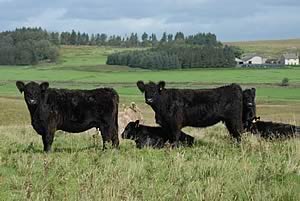 |
|||||||||
|
|||||||||||||||||||
|
|
Tackling the Major Annual Liver Fluke Cost Liver fluke is currently costing the beef industry £8-9.5 million each year, the vast majority of this loss being suffered by producers, according to the latest estimates from EBLEX, the industry body for beef and lamb levy payers.
English abattoir records show more than 280,000 cattle livers have been excluded from the human food chain in the 12 months to this September as a result of fluke infection. This represents an annual loss of nearly £1 million to the meat trade. Although substantial, this is dwarfed by the estimated £25-30 farm cost of each case of liver fluke resulting from slower growth rates, lower feed conversion efficiencies and greater mortalities; losses adding up to some £7-£8.5 million a year nationally. EBLEX stresses that effective cattle management at housing offers one of the best opportunities of tackling these major losses. Even though the most recent National Animal Disease Information Service (NADIS) parasite forecast predicts only a moderate liver fluke prevalence across much of western England this winter, it insists that vigilance and well-planned anthelmintic programmes on housing will pay dividends for most beef businesses. While early action is important to minimise the damage fluke can cause over the winter, blanket anthelmintic treatment is by no means always necessary - and may be counter-productive in encouraging the development of resistance as well as a waste of money. Presence of fluke infections can be detected by screening a group of stock for fluke eggs in the dung or blood testing. Abattoir feedback is also important. Where the presence of fluke is confirmed or suspected it is vital to treat all ages of grazed cattle with a specific flukicide. Dosing shortly after housing with a product that has activity against both young immature fluke and adults is recommended to reduce infection in cattle quickly and minimise production losses. Since fluke take approximately 12 weeks to mature after ingestion flukicides that control adult fluke alone will only be fully effective three months after housing. It is important to appreciate that some products - including combination worm and fluke treatments - claiming activity against immature fluke only actually kill larvae older than nine weeks while others are effective against those as young as two weeks of age. This makes it important to seek veterinary advice on product selection and timing, preferably as part of a regular testing and treatment protocol set down in the herd health plan. Further advice and guidance on minimising losses from this important cattle parasite by the most effective management is available free of charge to levy payers in Beef Action for Profit Sheet 25: Better Returns by Controlling Liver Fluke. This can be obtained from the BRP publications section of www.eblex.org.uk or by calling 0870 241 8829.
|
||||||||||||||||||

|
|
||||||||||||||||||
| home | agri-services | pedigree
pen | news | dairy | beef | machinery property | organisations | site map |
|||||||||||||||||||

